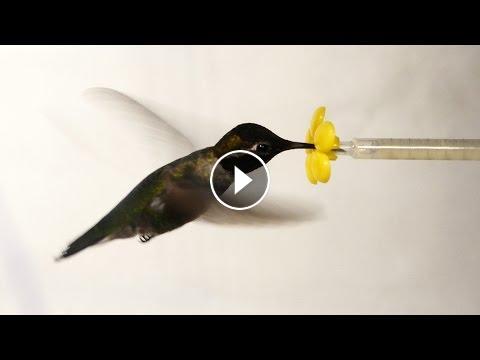Video Description:
Scientists have used a high-speed camera to film hummingbirds' aerial acrobatics at 1000 frames per second. They can see, frame by frame, how neither wind nor rain stop these tiniest of birds from fueling up. How do hummingbirds eat? With spring in full bloom, hummingbirds can be spotted flitting from flower to flower and lapping up the sugary nectar inside. These tiniest of birds have the highest metabolism of any warm-blooded animal, requiring them to consume their own body weight in nectar each day to survive. By comparison, if a 150-pound human had the metabolism of a hummingbird, he or she would need to consume the caloric equivalent of more than 300 hamburgers a day. But it's not just an extreme appetite that sets hummingbirds apart from other birds. These avian acrobats are the only birds that can fly sideways, backwards and hover for long stretches of time. In fact, hovering is essential to hummingbirds' survival since they have to keep their long, thin beaks as steady as a surgeon's scalpel while probing flowers for nectar.
- Category
- Video Of The Day!

Be the first to comment












